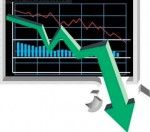What’s Left: Red Scare

To quote Steve Cook of the National Journal, “A certain ebb and flow marks every campaign year,” and these 2010 midterm elections are no different. Throughout most of this campaign year, the Republican Party has held the upper hand thanks to an impassioned anti-Washington, anti-Obama and anti-incumbent fervor. As a Democrat, I can admit that I am concerned about the possibility of the Democrats losing control of the House and the Senate. Fact is, I have a reason to be worried, and all other Democrats should be worried too.
With the United States in such a precarious economic situation, due primarily to policies enacted under previous Republican leadership, these midterm elections are more important than ever. In Congress, the majority party in each house controls the committees, effectively controlling what bills come to a vote. With the current complete lack of bipartisanship, combined with the rise of a much more conservative, if not radical, right wing, the majority party will choose the direction of the legislature and give no heed to the opinions of the opposition. If the Republicans gain a majority, expect no kindness directed toward previous Democratic legislature, i.e. health care reform, Wall Street reform or future stimulus money. The uncertainty of these upcoming elections should worry every Democrat. In the House, Republicans need to win 39 additional seats to gain majority. According to recent polls by the New York Times, 51 Democratic seats are either “leaning Republican” or a “toss up”, while all incumbent Republican seats are either “solid Republican” or “leaning Republican.” In the Senate, although the chances of Republicans gaining a majority are slim, there is a strong possibility that Republicans will gain a number of seats, considering that polls now show that 11 Democratic seats are either “leaning Republican” or “toss up.” With a smaller margin between the two parties in the Senate, Democrats will struggle to reach the 60 votes needed to prevent a Republican filibuster on almost every piece of legislation.
Let us examine the possibility of a Republican-controlled Congress. Considering that the Republican economic agenda has continued to be vague, even after the release of the new “Pledge to America,” we can expect that it will be no different from that of the failed Bush Administration economic policies. For those who don’t remember, the Bush Administration, combined with a Republican Congress, lost a net of nearly 8 million jobs, turned a record 230 billion dollar surplus achieved by the Clinton Administration into a 1.3 trillion dollar deficit and loosened restrictions on Wall Street causing the second worst recession in United States history.
First, the Republicans plan to make the Bush tax cuts permanent. When Congress originally approved the tax cuts, they refused to make them permanent because they knew that the country could not pay for them long term. We still can’t! Independent economists have estimated that, if made permanent, the tax cuts will add 3.7 trillion dollars to the national debt over the next decade. Second, the Republicans plan to cancel all the remaining TARP money. TARP money, which Republicans claim will save 16 billion dollars if canceled (if my math is right, that is less than half a percent of the money that tax cuts will add to the deficit), has saved over 2 million jobs and increased the United States GDP. Nonetheless, Democrats are far from giving up hope. A recent CNN News Opinion Poll revealed that among registered voters, Democrats and Republicans are tied now at 47 percent, much different from the September 21 poll where the Republicans held a six-point advantage. However, voter turnout in midterm elections is usually 1/3 lower than in presidential election years, which addresses the Democratic problem of “voter enthusiasm.” Obviously this is a big problem, with even bigger consequences. Democrats must get out to the polls. Considering that Democratic support continues to grow among registered voters, a high democratic voter turnout will ensure that Congress remains under Democratic control and the United States stays on the path to economic recovery.








